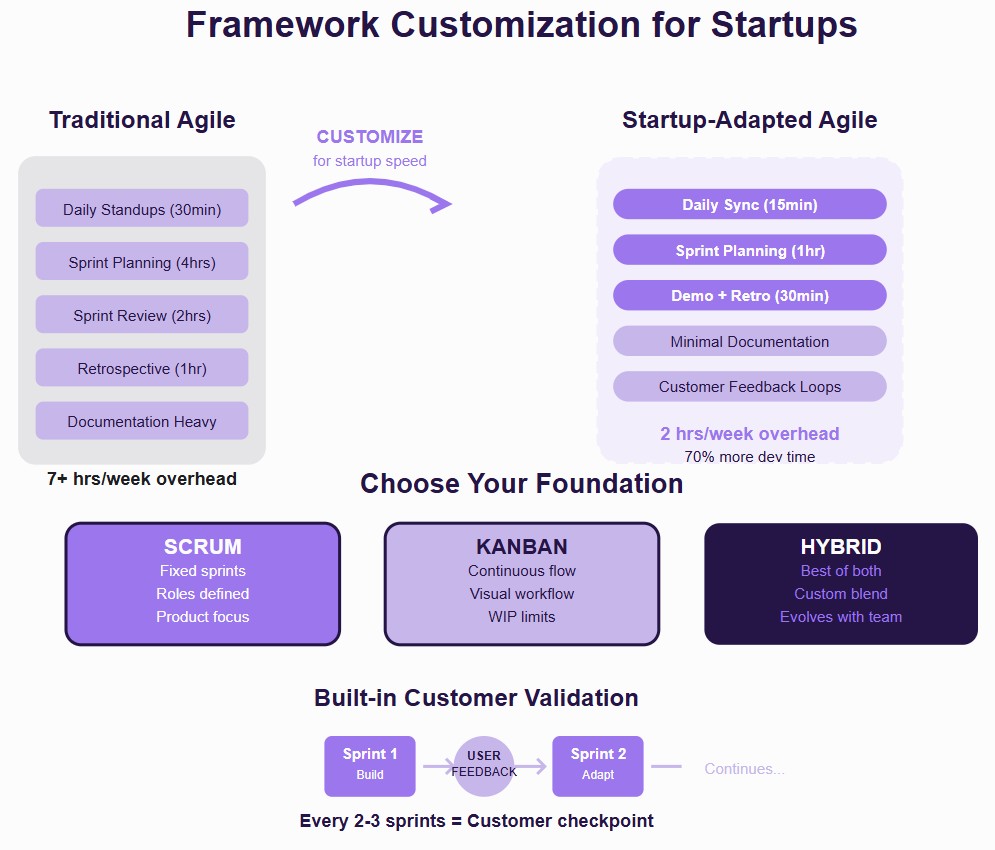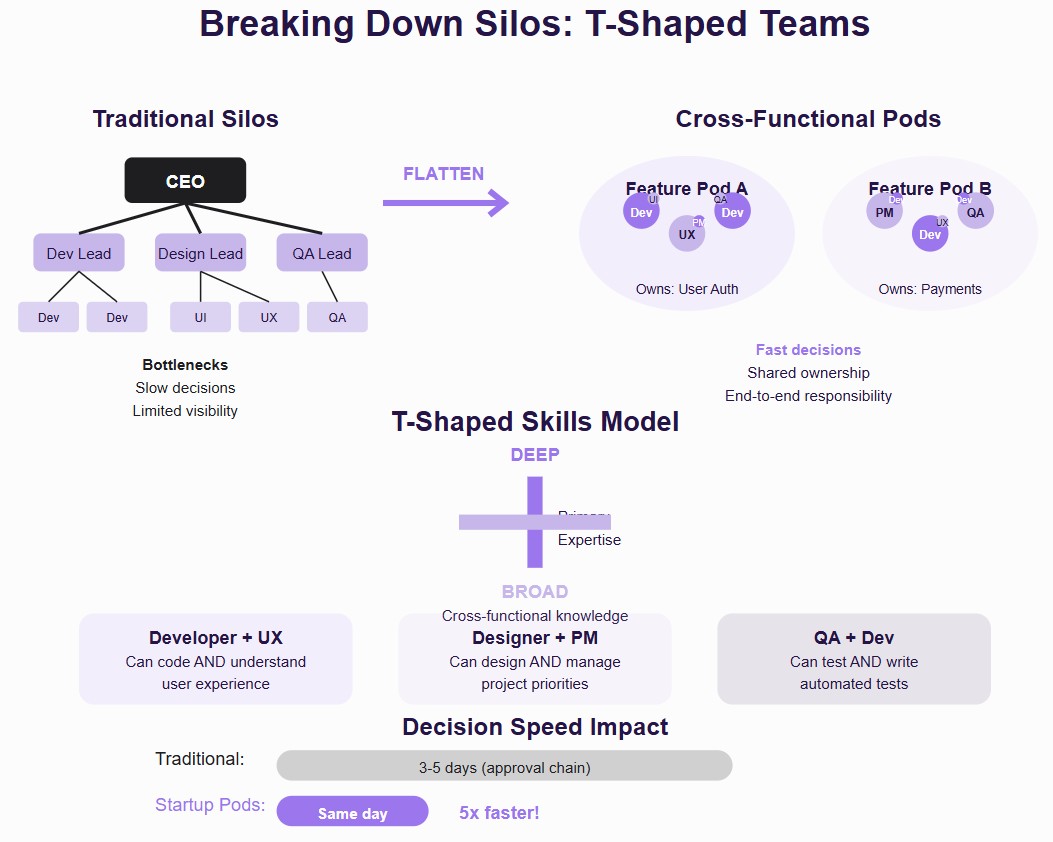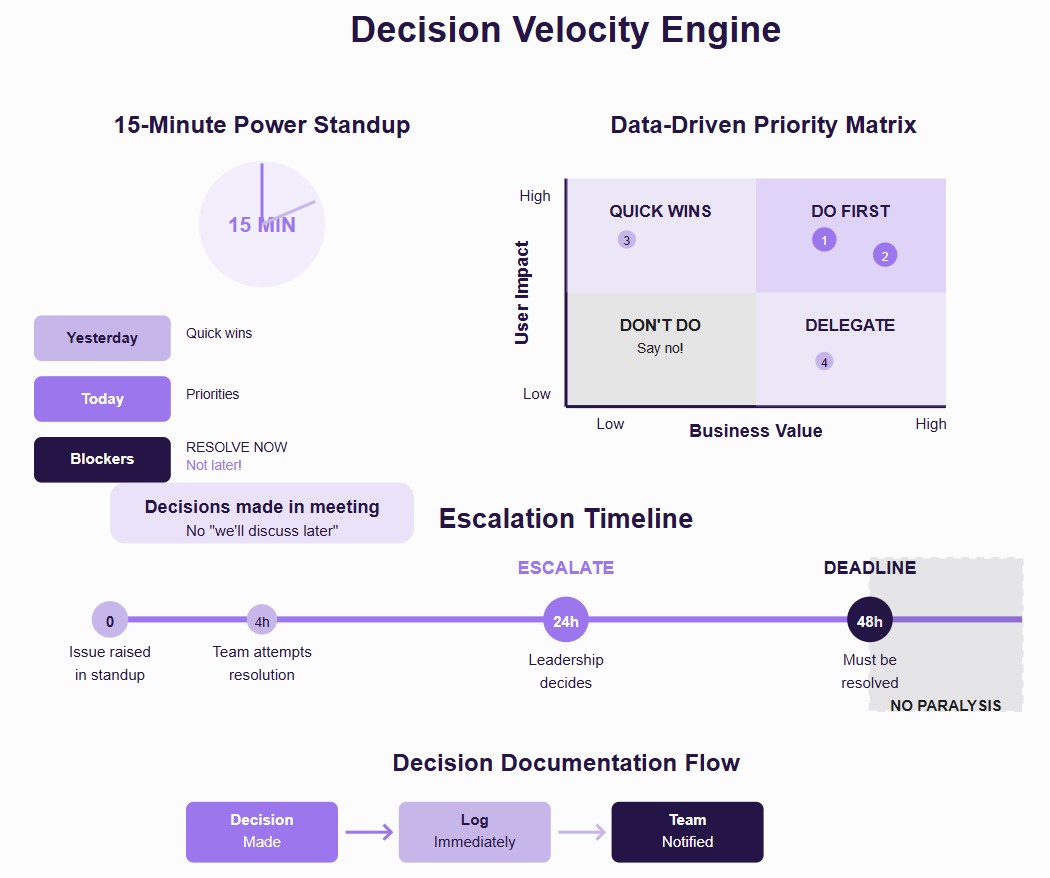From MVPs launched over coffee to roadmaps scribbled on pizza boxes, how tech startups approach project management is anything but traditional.
It’s fast, messy, customer-obsessed, and surprisingly effective. In a world where execution speed trumps perfection, startups rely on lean thinking, flexible systems, and just enough structure to stay focused without slowing down.
In this article, we will explore:
- Follow these 8 smart moves to go from MVP to market leader
- Understand how startup PM radically differs from enterprise methods
- Avoid these silent killers that sabotage startup execution early
The Tech Startup Project Management Code: 8 Steps from MVP to Market Domination
In the fast-paced world of tech startups, traditional project management approaches often fail. Startups need a fundamentally different strategy - one that prioritizes speed, adaptability, and customer validation over rigid processes.
Here's the proven 8-step blueprint that successful tech startups use to turn ambitious ideas into market-ready products.
Step 1: Start with Lean Planning and Goal Setting
Smart startups don't plan for perfection - they plan for learning. The key is breaking down your grand vision into bite-sized, testable pieces that can deliver value quickly.
- Define MVP-focused objectives by identifying the core problem you're solving and the simplest solution that proves your concept works
- Set 2-week sprint goals that create momentum while allowing quick pivots based on what you learn from each iteration
- Create resource-aware timelines by honestly assessing your team's actual capacity, accounting for unexpected challenges and learning curves
- Built in pivot flexibility with project scopes designed to adapt when market feedback inevitably changes your direction
Real-world example: Dropbox started with a simple video demo as their MVP before building the full product, validating demand first.
This approach ensures you're building what customers actually want, not what you think they need.
Step 2: Choose Agile-Based Methodology Framework
85% of successful tech startups use Agile methodologies as their foundation, but they customize these frameworks to fit their unique constraints and fast-moving environment.
- Select your primary methodology from Agile, Scrum, or Kanban based on your team size and product complexity
- Customize for startup constraints by simplifying ceremonies and reducing documentation overhead while maintaining core principles
- Implement 1-2 week iterative cycles with daily standups to maintain alignment and quickly identify blockers
- Establish customer feedback loops every 2-3 sprints to ensure you're building features that users actually value

Real-world example: Spotify created their own "Spotify Model" by adapting Scrum principles to an autonomous squads and tribes structure.
Remember: the methodology serves you, not the other way around. Adapt it as your startup evolves.
Step 3: Build Cross-Functional Team Structure
Startups can't afford silos. Success requires creating agile teams where everyone understands the big picture and can contribute across disciplines.
- Create flat organizational structures that eliminate approval bottlenecks and empower team members to make decisions quickly
- Assign dual roles strategically where team members develop T-shaped skills (deep in one area, broad in others)
- Establish clear ownership for deliverables while maintaining collaborative decision-making processes
- Form product-engineering pods of 3-5 people who own complete features from conception to customer delivery

Real-world example: GitHub's early team had developers handling customer support, giving them direct insight into user pain points.
This structure enables faster decision-making and creates a shared sense of ownership across the entire product.
Step 4: Implement Digital-First Tool Stack
Your tools should accelerate, not complicate your workflow. Start simple and scale up as your needs grow more sophisticated.
- Choose scalable project management software for startups, starting with free tiers like Dart or Trello that can grow with your team.
- Integrate communication tools like Slack for async communication and Zoom for face-to-face alignment sessions
- Set up version control systems using Git-based workflows for both code and documentation collaboration
- Establish a single source of truth where all project status, requirements, and decisions live in one accessible location
Real-world example: Basecamp built its own project management tool because existing solutions were too complex for their startup needs.
The goal is eliminating information silos while keeping overhead minimal.
Step 5: Create Rapid Decision-Making Processes
Speed beats perfection in startup environments. Build systems that help you make good decisions quickly rather than perfect decisions slowly.
- Implement 15-minute daily standups with authority to resolve blockers immediately, not just identify them
- Use data-driven prioritization based on user metrics and business KPIs rather than opinions or assumptions
- Establish 24-48 hour escalation paths for unresolved issues to prevent decision paralysis
- Document decisions in real-time to prevent endless re-discussion of settled issues
This creates decision momentum that keeps projects moving forward even when facing uncertainty.

Step 6: Focus on Customer-Centric Validation
Build for your customers, not your assumptions. Every project decision should connect back to solving real user problems.
- Build direct feedback channels through regular user interviews, surveys, and usage analytics
- Create validation checkpoints with customer testing at the end of each major sprint or feature release
- Implement continuous deployment to ship small changes frequently and gather rapid market feedback
- Maintain user story focus, where all development ties directly to specific user needs and measurable business outcomes
Real-world example: Buffer validated their concept with a simple landing page before writing any code, proving demand first.
This ensures you're building a product people actually want rather than just something that works.
Step 7: Optimize for Speed and Quality Balance
"Good enough" today beats perfect tomorrow. Focus on shipping functional features quickly, then improving based on real user behavior.
- Ship functional features rapidly using "good enough" standards that solve the core problem effectively
- Implement automated testing and continuous integration to maintain quality without slowing development velocity
- Track technical debt actively and plan regular refactoring to prevent system degradation over time
- Define clear "done" criteria so everyone knows when features are ready for customer release
This creates sustainable development velocity that maintains quality while maximizing learning speed.
Step 8: Scale Processes as Team Grows
Start simple, evolve strategically. Your processes should grow with your team, not ahead of it.
- Begin with basic tools like simple Kanban boards, then evolve to more sophisticated tracking as complexity increases
- Document processes as you create them to build a knowledge base for new team members' onboarding
- Conduct monthly retrospectives using a project audit template to assess what's working and what needs adjustment.
- Plan for specialization by preparing for dedicated PM roles when your team reaches 10-15 people
This ensures your project management scales smoothly without creating unnecessary overhead.
Master these eight principles, and you’ll turn startup chaos into a launch-ready system built for speed, clarity, and real-world results.
Startup vs Enterprise Project Management: How Approaches Clash and Why It Matters
Making the leap from corporate project environments to startups? The difference is more than just company size; it’s a fundamental shift in how decisions are made, how quickly teams move, and how success is measured.
Use the table below to quickly understand how startup and enterprise project management differ across the most critical dimensions:
In startups, the focus is on building what works fast. Projects are shaped by customer feedback, not internal politics. Team members often juggle multiple roles, decisions happen during standups, and frameworks serve as flexible guides, not rigid rules.
In contrast, enterprise PM is built for scale, predictability, and risk control. While that ensures structure and accountability, it often slows down innovation. For professionals transitioning from corporate to startup environments, this shift can feel liberating or chaotic, depending on the mindset.
The key takeaway? Startups prioritize outcomes over output, velocity over perfection, and learning over process. Adjusting to that mindset is essential to thrive in lean, high-growth teams.
Hidden PM Traps That Turn Promising Startups Into Cautionary Tales
Even brilliant startup teams with game-changing ideas can crash and burn due to preventable project management mistakes. These aren't technical failures; they're operational blind spots that slowly drain resources and derail promising ventures.
Here are the four most dangerous PM traps that catch startup teams off guard.

Building the Death Star Before Testing the Laser
The trap: Spending months perfecting features that customers never asked for while competitors capture market share with simpler solutions.
What it looks like: Planning 6-month development cycles, adding "nice-to-have" features, refusing to ship until everything is "perfect."
The solution:
- Start with a single core feature that solves one specific problem extremely well
- Launch in 4-6 weeks, maximum, with the simplest version that demonstrates value
- Get real user feedback before adding any secondary features
Tool Hoarding Without Process Design
The trap: Accumulating project management tools while the team drowns in notification chaos and scattered information.
What it looks like: Using Slack + Discord + email for communication, tracking tasks in multiple platforms, and storing files everywhere.
The solution:
- Choose ONE primary tool for each function (communication, task management, file storage)
- Define clear handoff processes between tools
- Eliminate redundant platforms ruthlessly—even if they have features you like
The Moving Finish Line Problem
The trap: Teams work hard but never feel progress because no one clearly defines what "finished" actually means.
What it looks like: Features getting "90% done" and staying there for weeks, endless tweaking without shipping.
The solution:
- Create a "Definition of Done" checklist that every feature must meet before completion
- Include customer-facing criteria: "Feature solves the user problem we identified."
- Set time boundaries: "If not shippable in 2 weeks, break it down further."
The Founder Bottleneck Syndrome
The trap: Founders who try to approve every decision end up slowing down the very speed that gives startups their competitive advantage.
What it looks like: All decisions waiting for founder approval, team members afraid to act independently, and founders working 80-hour weeks.
The solution:
- Define decision-making boundaries: what requires founder input vs. team autonomy
- Create "decide and inform" categories for low-risk decisions
- Focus founder energy on strategy and customer development, not operational details
Remember: Perfect project management doesn't exist in startups - the goal is building systems that help you fail fast, learn quickly, and iterate toward success.
Turn Startup Chaos Into Execution That Delivers
Startup success comes from focused execution, not flawless planning. When you combine lean thinking, agile workflows, and fast feedback loops, you create a system that drives momentum without losing flexibility. The steps you've explored are built for teams that move quickly and learn even faster.
Apply them with clarity, adapt them to your rhythm, and lead your team with purpose. With the right mindset and structure, you can turn the unpredictability of startup life into a powerful execution engine that delivers real results.


.png)
_light%201.png)





